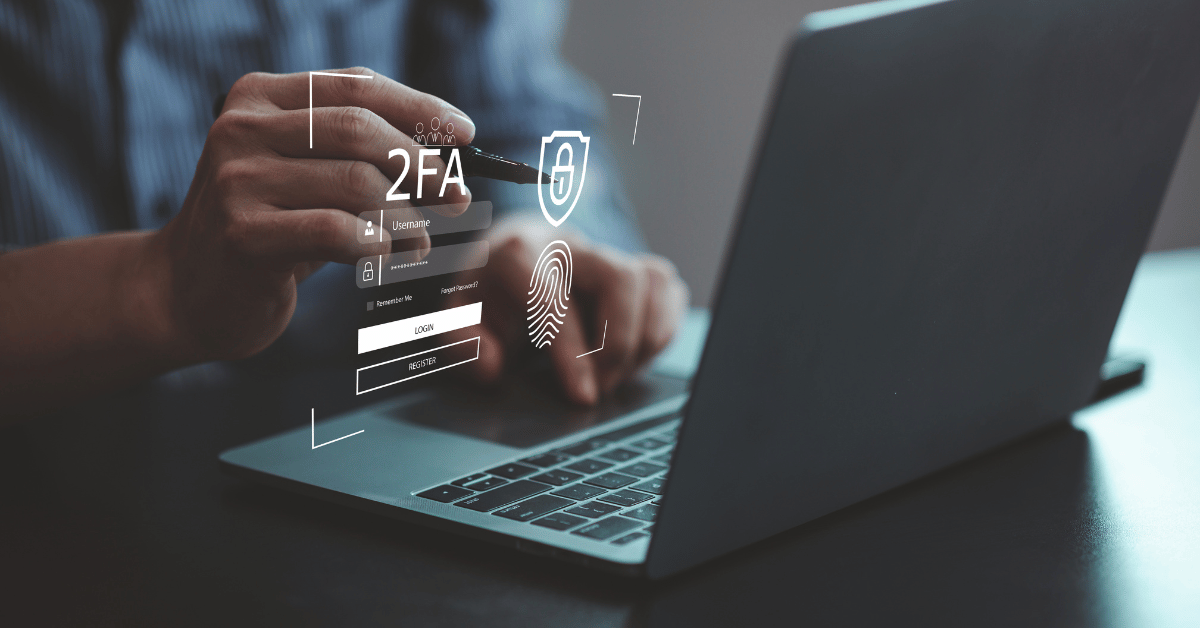For some time, Multi-Factor Authentication (MFA) has stood as a formidable bulwark against the ceaseless tides of cyber threats. Yet, even the most stalwart defenses can falter under the strain of constant vigilance. The phenomenon of MFA fatigue, a growing concern within the cybersecurity community, jeopardizes the integrity of our defenses, making it a critical issue that demands our attention and resolve.
Unpacking MFA Fatigue: A Primer for Security Managers
MFA fatigue emerges as a formidable adversary in our ongoing quest to fortify digital defenses, presenting a nuanced challenge that demands a sophisticated understanding and strategic approach from security managers. At its core, MFA fatigue is characterized by a user’s diminishing responsiveness to authentication requests, a phenomenon that not only erodes the efficacy of MFA systems but also heightens the risk profile of the entire organization. This weariness towards authentication processes is not merely a byproduct of inconvenience; it is a symptom of systemic issues that require a comprehensive analysis to address effectively.
For security managers, grappling with MFA fatigue entails delving into the intricacies of human behavior as much as it involves understanding the technicalities of cybersecurity mechanisms. It necessitates a careful examination of the user experience, identifying friction points that could lead to security fatigue. Critical to this understanding is the recognition that the frequency and complexity of MFA requests are principal drivers of fatigue. Security protocols that demand too much of users, either in terms of the time taken or the cognitive load imposed, inevitably lead to a search for shortcuts, which in turn compromises the system’s integrity.
In essence, addressing MFA fatigue is a dual challenge that involves not only tweaking the technical aspects of MFA implementation but also reshaping the user interaction with these systems. Security managers are called upon to architect MFA solutions that are not only robust but are also intuitive and user-friendly, thereby safeguarding the organization’s assets while ensuring a seamless user experience. This intricate dance between security and usability forms the crux of the battle against MFA fatigue, a battle that demands both ingenuity and empathy from those at the helm of cybersecurity initiatives.
The Catalysts Behind MFA Fatigue: Identifying the Root Causes
The underpinnings of MFA fatigue are multifaceted, rooted in both the technological landscape and the human experience of navigating it. Chief among these catalysts is the frequency of authentication demands placed upon users. In an era where digital access is a non-negotiable aspect of daily operations, the relentless barrage of authentication requests can erode patience and resilience, leading to a critical state of fatigue. This incessant requirement for verification, while designed to protect, paradoxically becomes a vulnerability as users seek paths of least resistance, often at the expense of security.
Further compounding this issue is the complexity and perceived intrusiveness of some authentication methods. Processes that demand considerable cognitive effort or those that significantly disrupt user workflow not only degrade the user experience but also invite resistance. Such complexities inadvertently encourage the pursuit of convenience over compliance, nurturing an environment ripe for security oversights.
Moreover, the psychological aspect of MFA fatigue cannot be overlooked. The constant state of alertness required by rigorous authentication protocols can induce a sense of skepticism or even nihilism towards the efficacy of such measures. This psychological weariness, when left unaddressed, fosters a culture of indifference towards security protocols, undermining the very foundation of cybersecurity efforts.
In dissecting these root causes, it becomes evident that MFA fatigue is not merely a symptom to be treated but a signal pointing towards deeper issues within the cybersecurity infrastructure and organizational culture. Recognizing and understanding these catalysts is the first step in devising more effective, empathetic, and enduring solutions to this pervasive challenge.
The Ramifications of MFA Fatigue on Security Posture
The fallout from MFA fatigue infiltrates the very sinews of an organization’s security framework, compromising its strength from within. As users, beleaguered by incessant authentication requests, begin to seek the path of least resistance, the carefully constructed defenses start to show cracks. This degradation is not merely a matter of inconvenience but a significant strategic vulnerability. Errant behaviors such as the dismissal of security notifications, the recycling of passwords, or resorting to simplistic authentication methods become alarmingly common. Each of these actions, while seemingly trivial in isolation, collectively undermines the organization’s security posture, transforming it into a target ripe for exploitation.
The consequences are far-reaching and multifaceted. An organization, once fortified by rigorous authentication protocols, finds itself exposed to an array of cyber threats. The potential for data breaches escalates, carrying with it the twin specters of financial loss and reputational damage. The breach of customer data not only erodes trust but also invites scrutiny from regulators, leading to potential legal repercussions. Moreover, the operational disruption, the diversion of resources to mitigate breaches, and the long road to restoring integrity and trust are challenges that can set an organization back significantly.
In this light, MFA fatigue represents not just a technical hurdle, but a profound risk to the organization’s security landscape. Its implications extend beyond the immediate inconvenience to users, threatening the very foundation upon which trust and reliability are built. Recognizing the gravity of this issue is the first step toward fortifying defenses and reasserting control over the organization’s digital domain.
Engineering Solutions to Counter MFA Fatigue
Crafting an effective strategy to mitigate MFA fatigue transcends basic adjustments, weaving together innovative technologies and user-centered design principles to strike a harmonious balance between unwavering security and optimal user experience. A pivotal component of this strategy involves the deployment of adaptive authentication mechanisms. These systems intelligently calibrate the rigor of authentication protocols to the context of each access request, minimizing unnecessary friction for users under low-risk conditions while tightening security for higher-risk scenarios. This nuanced approach not only enhances security but also respects the user’s time and mental bandwidth, thereby reducing the potential for fatigue.
Further amplifying the effectiveness of this strategy is the integration of biometric verification methods. By leveraging characteristics that are inherently unique to each individual, such as fingerprints or facial recognition, we can offer a seamless yet secure authentication experience. These methods, inherently less intrusive and quicker than traditional password-based systems, can significantly alleviate the cognitive load on users, curtailing the onset of fatigue.
In parallel, the judicious application of machine learning algorithms stands as a testament to the power of data-driven insights in the fight against MFA fatigue. These advanced systems can predict when users are most likely to experience fatigue and adjust authentication requirements in real-time, ensuring a dynamic and responsive security posture.
Together, these engineered solutions represent a sophisticated blend of technology and empathy, a testament to our commitment to not only protect but also to empower the digital citizenry in an age where security and usability are paramount.
A Call to Arms: The Role of Visionary Leadership in Overcoming MFA Fatigue
Addressing the challenge of MFA fatigue transcends the realms of technological fixes and user-centric designs, elevating the discourse to the pivotal role of visionary leadership. The leaders within our digital fortresses are not merely strategists or decision-makers; they are the harbingers of a culture that marries security with seamlessness, and resilience with responsiveness. To surmount the hurdles posed by MFA fatigue, it necessitates a leadership ethos that embodies and imparts a profound appreciation for the intricacies of cybersecurity and the human element intertwined within it.
Visionary leaders in this context act as catalysts for change, instigating a shift in perspective from viewing MFA as a mere procedural necessity to recognizing it as a cornerstone of our collective digital well-being. This shift is paramount in cultivating an environment where the principles of security are not seen as impediments but as essential enablers of digital freedom and trust. It is through the articulation of this vision and the demonstration of an unwavering commitment to both security and user experience that leaders can galvanize their teams and user communities.
The true measure of success in this endeavor lies in fostering a pervasive culture of security mindfulness—one where every member understands the role they play in the cybersecurity ecosystem and is equipped to navigate its challenges with knowledge and resolve. Visionary leadership, therefore, is not just about making decisions; it’s about inspiring a shared commitment to a secure digital future, thereby transforming the battle against MFA fatigue from a technical skirmish into a collective crusade for a safer cyber world.
Charting the Course Forward: Strategies for Sustainable MFA Implementation
Navigating the journey towards a sustainable MFA framework mandates an ethos of perpetual vigilance and adaptability. It compels security managers to adopt a proactive posture, one that prioritizes continuous assessment and iterative improvement of authentication processes. A crucial aspect of this dynamic approach involves the strategic collection and analysis of user feedback, which serves as a compass guiding the refinement of MFA systems. This feedback, rich with insights into user experience and potential friction points, allows for the customization of authentication mechanisms, ensuring they are not only secure but also aligned with user needs and expectations.
To further enhance the efficacy and resilience of MFA strategies, the integration of predictive analytics and machine learning technologies stands as a beacon of innovation. These sophisticated tools have the capacity to delve into vast datasets, identifying patterns and trends that may signal the onset of MFA fatigue. By harnessing these predictive capabilities, security teams can anticipate challenges and automate adjustments to authentication requirements, ensuring a responsive and fluid security posture that adapts to the evolving landscape.
At its core, the pursuit of sustainable MFA implementation is anchored in cultivating a culture where security is perceived not merely as a technical requirement but as a collective endeavor. It involves enlightening and engaging the entire organizational ecosystem, from the top echelons of leadership down to every individual user, in a shared mission to protect digital realms. This holistic approach underscores the belief that the strength of our cyber defenses is intricately tied to the awareness, engagement, and empowerment of all stakeholders in the digital security equation.
Try Portnox Cloud for Free Today
Gain access to all of Portnox's powerful zero trust access control free capabilities for 30 days!









